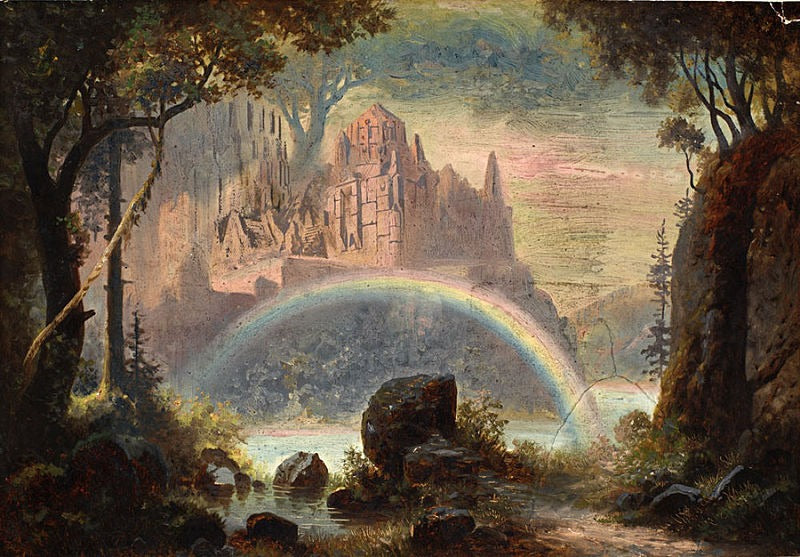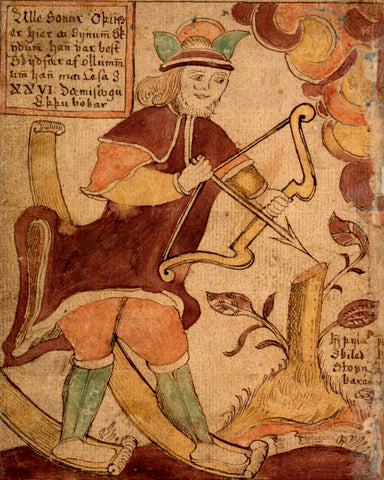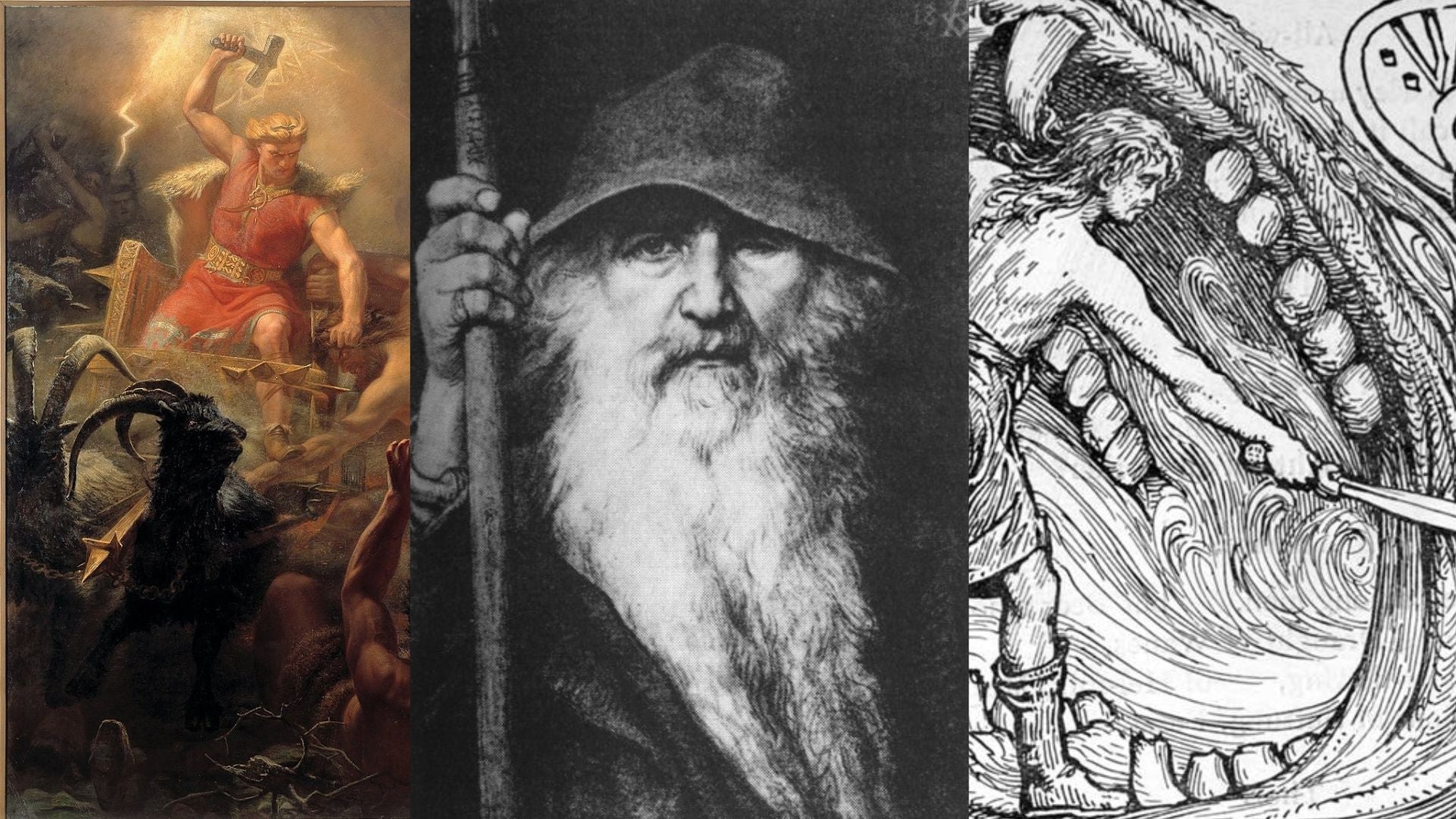
Exploring the Pantheon: An In-Depth Look at the Twelve Norse Gods
Norse mythology owns a massive pantheon of gods, goddesses, heroes, and creatures that have captured the imagination of people for centuries. Among the myriad deities in the Norse pantheon, twelve stand out as the most prominent and influential figures. Let's delve into the characteristics and significance of these top twelve Norse gods.
1. Odin - The All-Father:

Known as the chief of the gods, Odin is revered as the god of war, wisdom, poetry, and magic. He is depicted as a wise and mysterious figure, often associated with knowledge-seeking and divine inspiration. Odin’s quest for wisdom led him to sacrifice one of his eyes at the Well of Mimir, symbolizing his relentless pursuit of knowledge. He has an entire book, the Hávamál (translating to 'Words of the High One'), which tells of his travels, triumphs and his advise to mankind.
2. Thor - The Thunder God:

Thor, the mighty god of thunder and battle, is perhaps one of the most recognizable Norse deities. Renowned for his strength and bravery, Thor wields his mighty hammer, Mjölnir, to protect both gods and humans from the forces of chaos and destruction, and is often mentioned in several poems as 'out fighting giants' when he is absent. He is also associated with fertility and agriculture, making him a vital figure in Norse society.
3. Balder - The Bright God:

Balder, the favoured son of Odin, is the god of beauty, innocence, peace, and rebirth. He is often depicted as a symbol of purity and light, beloved by both gods and mortals alike. Balder's tragic death, orchestrated by Loki, and subsequent resurrection are central to Norse mythology, symbolizing the cyclical nature of life, death, and renewal.
4. Víðarr - The Silent Avenger:

Víðarr is the god of silence, stealth, and revenge, often believed to have a connection with nature and the wilds. He is portrayed as a stoic and formidable figure, often associated with the concept of divine justice. Víðarr's role as the avenger of his father Odin's death during Ragnarok highlights his unwavering loyalty and determination. During the Twilight of the Gods, Víðarr is said to slay the monstrous wolf spawn of Loki, Fenrir, either by stabbing him in the mouth with his sword, or ripping the wolf's jaw apart, depending on the version of the story.
5. Váli - The Vengeful Avenger:

Váli is the god of vengeance, often depicted as the son of Odin and the giantess Rindr. He is primarily known for avenging the death of Balder by slaying his blind brother, Hodr. Váli's actions embody the Norse concept of cosmic balance and the inevitability of fate.
6. Brage - The Poetic Muse:

Brage is the god of poetry, music, and the harp. He is revered as the patron of skalds (Norse poets) and musicians, inspiring creativity and eloquence among mortals. Brage's presence is often invoked during feasts and gatherings, where his gifts of speech and artistry are celebrated.
7. Heimdall - The Guardian of Asgard:

Heimdall, a son of Odin, serves as the guardian of Asgard, the realm of the gods. With his keen senses and watchful gaze, Heimdall stands ever vigilant against threats to the divine realm. He is also associated with the Bifröst, the rainbow bridge that connects Asgard to the mortal world. He dwells upon the mountain Himinbjörg - there he watches for signs of Ragnarok, where he will blow his horn Gjallarhorn to signal the cataclysmic event.
8. Týr - The God of Law and Heroism:

Týr is the god of law, justice, and heroic glory. He is revered as a courageous and selfless figure, willing to sacrifice his own hand to bind the mighty wolf Fenrir. Týr's unwavering commitment to honor and duty makes him a respected figure among both gods and mortals.
9. Njord - The God of Sea and Wealth:

Njord is the god of the sea, wind, fish, and wealth. As a deity associated with maritime activities and prosperity, Njord is often invoked by sailors and traders seeking safe voyages and abundant riches. He is also revered as a benevolent figure who brings fertility to the land.
10. Frigg - The Queen of Asgard:

Frigg, the queen of Asgard and wife of Odin, commands respect and reverence in Norse mythology. She is the embodiment of wisdom, foresight, and maternal love. As the goddess of the sky and heavens, Frigg oversees the well-being of families and the protection of home and hearth. Her domain extends to matters of fate and destiny, as she possesses the knowledge of all things past, present, and future. Frigg's presence is felt in the gentle caress of the wind and the warmth of the sun, symbolizing her nurturing and protective nature. As the mother of Baldr, the beloved god of light, Frigg represents the enduring bond between parent and child, offering solace and guidance to those in need.
11. Ullr - The God of Winter and Hunting:

Ullr is the god of winter, archery, and hunting. He is revered as a skilled hunter and warrior, often invoked by those seeking success in hunting and warfare. Ullr's presence is particularly felt during the harsh winter months, where his protection is sought against the perils of the cold.
12. Forseti - The God of Justice:

Forseti is the god of justice, peace, and reconciliation. He is depicted as a wise and fair judge, presiding over disputes and ensuring harmony among gods and mortals alike. Forseti's role as a mediator reflects the importance of justice and order in Norse society.
These twelve top Norse gods encompass a diverse range of attributes and responsibilities, reflecting the complexities of the human experience. From Odin's wisdom to Thor's strength, each deity plays a vital role in the cosmic order of Norse mythology, shaping the destinies of gods and mortals alike. Through their stories and legends, these gods continue to inspire awe and reverence in those who seek to understand the mysteries of the Norse pantheon.








